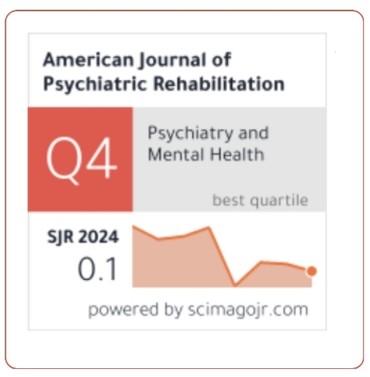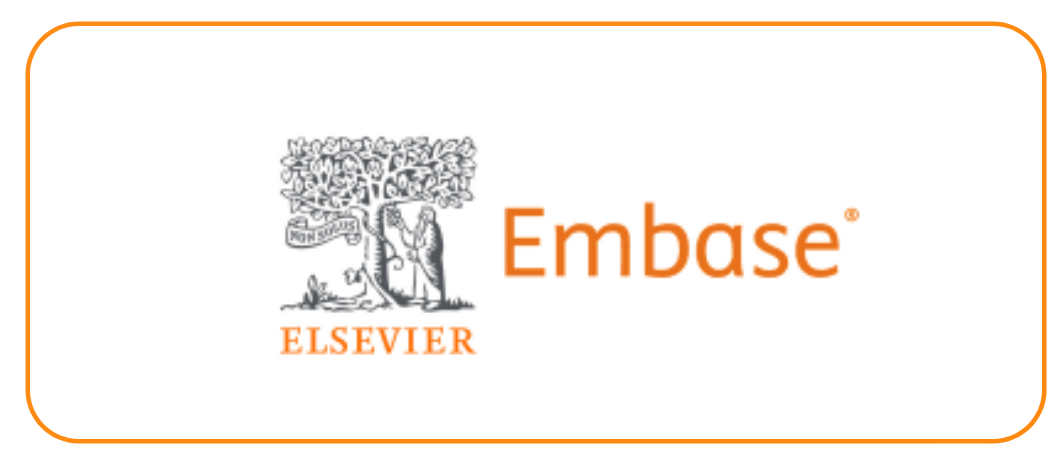Unraveling the Role of Luteolin from Avena Sativa in Alzheimer's Disease: Targeting Key molecular mechanisms and its Neuroprotective Effects.
DOI:
https://doi.org/10.69980/ajpr.v28i5.697Keywords:
Neuroprotection, Luteolin, Avena sativa , Autophagy, Alzheimer's disease(AD)Abstract
Neurodegenerative diseases, marked by progressive neuronal dysfunction and loss, pose significant health challenges with glutamate accumulation contributing to neuronal cell death in conditions such as Alzheimer's disease. It is a progressive neurodegenerative disorder characterized by cognitive decline, memory loss and behavioral impairments that disrupt daily activities. It's the most common form of dementia, accounting for 60-70% of cases. Alzheimer's disease involves the degeneration of brain tissue, including loss of nerve cells and reduced responsiveness to neurotransmitters. Amyloid plaques and neurofibrillary tangles composed of hyperphosphorylated protein contribute to neuronal degeneration. This study explores the neuroprotective potential of Avena sativa leaf extract and its major constituent, Luteolin, against glutamate-induced hippocampal neuronal cell death. Treatment with glutamate led to reduced cell viability, altered morphology, increased reactive oxygen species (ROS) and apoptosis in HT-22 cells. However, pre-treatment with Avena sativa extract and luteolin attenuated these effects, restoring mitochondrial function, decreasing mitochondrial superoxide, and preserving mitochondrial morphology. Notably, luteolin inhibited excessive mitophagy by reducing lysosomal activity. Furthermore, luteolin's neuroprotective effects were associated with the activation of mTORC1, which attenuated glutamate-induced autophagy-mediated cell death. These findings highlight the potential of A.sativa and Luteolin as neuroprotective agents, regulating autophagy and mitochondrial dynamics to inhibit glutamate-induced neurotoxicity. This study provides valuable insights into the therapeutic potential of Luteolin and A. sativa in mitigating neurodegenerative diseases.
References
1. N. Bains, S. Abdijadid, Major Depressive Disorder, StatPearls Publishing, Treasure Island, 2024.
2. Global Burden of Disease Study 2017 Collaborators, Global, regional, andnational incidence, prevalence, and years lived with disability for 301 acuteand chronic diseases and injuries in 188 countries, 1990-2013: A systematicanalysis for the Global Burden of Disease Study 2013, Lancet 386 (2015) 743e800.
3.A. Werner-Seidler, K. Huckvale, M.E. Larsen, et al., A trial protocol for theeffectiveness of digital interventions for preventing depression in adolescents: The Future Proofing Study, Trials 21 (2020), 2.
4.Trojsi, F., Christidi, F., Migliaccio, R., Santamaria-Garcia, H. & Santangelo, G. Behavioural and cognitive changes in neurodegenerative diseases and brain injury. Behav. Neurol. 2018, 4935915. https:// doi. org/ 10. 1155/ 2018/ 49359 15 (2018).
5. Wilson, D. M. 3rd. et al. Hallmarks of neurodegenerative diseases. Cell 186, 693–714. https:// doi. org/ 10. 1016/j. cell. 2022. 12. 032 (2023).
6. Talantova, M. et al. Abeta induces astrocytic glutamate release, extrasynaptic NMDA receptor activation, and synaptic loss. Proc. Natl. Acad. Sci. U. S. A. 110, E2518-2527. https:// doi. org/ 10. 1073/ pnas. 13068 32110 (2023).
7. Wang, J., Wang, F., Mai, D. & Qu, S. Molecular mechanisms of glutamate toxicity in Parkinson’s disease. Front. Neurosci. 14, 585584. https:// doi. org/ 10. 3389/ fnins. 2020. 585584 (2020).
8. Sheldon, A. L. & Robinson, M. B. The role of glutamate transporters in neurodegenerative diseases and potential opportunities for intervention. Neurochem. Int. 51, 333–355. https:// doi. org/ 10. 1016/j. neuint. 2007. 03. 012 (2017).
9. Shen, Z. et al. Glutamate excitotoxicity: Potential therapeutic target for ischemic stroke. Biomed. Pharmacother. 151, 113125. https:// doi. org/ 10. 1016/j. biopha. 2022. 113125 (2022).
10. Zhang, Y., Chu, J. M. & Wong, G. T. Cerebral glutamate regulation and receptor changes in perioperative neuroinflammation and cognitive dysfunction. Biomolecules https:// doi. org/ 10. 3390/ biom1 20405 97 (2022).
11. Kritis, A. A., Stamoula, E. G., Paniskaki, K. A. & Vavilis, T. D. Researching glutamate—induced cytotoxicity in different cell lines: a comparative/collective analysis/study. Front. Cell. Neurosci. 9, 91. https:// doi. org/ 10. 3389/ fncel. 2015. 00091 (2016)
12. L. Rindner, G. Str€ omme, L. Nordeman, et al., Prevalence of somatic andurogenital symptoms as well as psychological health in women aged 45 to 55attending primary health care: A cross-sectional study, BMC Womens Health17 (2017), 128.
13.P. Cuijpers, S. Quero, C. Dowrick, et al., Psychological treatment of depressionin primary care: Recent developments, Curr. Psychiatry Rep. 21 (2019), 129.
14.E. Hertenstein, E. Trinca, M. Wunderlin, et al., Cognitive behavioral therapyfor insomnia in patients with mental disorders and comorbid insomnia: Asystematic review and meta-analysis, Sleep Med. Rev. 62 (2022), 101597.
15. G. Hu, M. Zhang, Y. Wang, et al., Potential of heterogeneous compounds asantidepressants: A narrative review, Int. J. Mol. Sci. 23 (2022), 13776.
16.S. Subramanian, R. Lopez, C.F. Zorumski, et al., Electroconvulsive therapy intreatment resistant depression, J. Neurol. Sci. 434 (2021), 120095.
17. L.M. Behlke, E.J. Lenze, R.M. Carney, The cardiovascular effects of newerantidepressants in older adults and those with or at high risk for cardiovascular diseases, CNS Drugs 34 (2020) 1133e1147.
18. M. Xie, H. Wang, T. Gao, et al., The protective effect of luteolin on thedepression-related dry eye disorder through Sirt1/NF-kB/NLRP3 pathway,Aging 15 (2023) 261e275.
19. C. Wu, Q. Xu, X. Chen, et al., Delivery luteolin with folacin-modified nanoparticle for glioma therapy, Int. J. Nanomedicine 14 (2019) 7515e7531.
20. Z. Ashaari, M.A.R. Hadjzadeh, G. Hassanzadeh, et al., The flavone luteolinimproves central nervous system disorders by different mechanisms: A review, J. Mol. Neurosci. 65 (2018) 491e506.
21.M. Ashrafizadeh, Z. Ahmadi, T. Farkhondeh, et al., Autophagy regulationusing luteolin: New insight into its anti-tumor activity, Cancer Cell Int 20(2020), 537.
22. L. Zhang, R. Lu, R. Xu, et al., Naringenin and apigenin ameliorates corticosterone-induced depressive behaviors, Heliyon 9 (2023), e15618.
23. X. Liu, S. Ouyang, B. Yu, et al., PharmMapper server: A web server for potential drug target identification using pharmacophore mapping approach,Nucleic Acids Res. 38 (2018) W609eW614.
24. A. Daina, O. Michielin, V. Zoete, SwissTargetPrediction: Updated data andnew features for efficient prediction of protein targets of small molecules,Nucleic Acids Res. 47 (2019) W357eW364.
25. W. Liu, L. Wang, J. Zhang, Peanut shell extract and luteolin regulate lipidmetabolism and induce browning in 3T3-L1 adipocytes, Foods 11 (2022),2696.
26.A.X. Gao, T.C.X. Xia, Z. Peng, et al., The ethanolic extract of peanut shell attenuates the depressive-like behaviors of mice through modulation ofinflammation and gut microbiota, Food Res. Int. 168 (2023), 112765.
27.B.K. Vazhayil, S.S. Rajagopal, T. Thangavelu, et al., Neuroprotective effect ofClerodendrum serratum Linn. leaves extract against acute restraint stressinduced depressive-like behavioral symptoms in adult mice, Indian J. Pharmacol. 49 (2017) 34e41.
28.M.O. Villareal, K. Sasaki, D. Margout, et al., Neuroprotective effect of Picholinevirgin olive oil and its hydroxycinnamic acids component against b-amyloidinduced toxicity in SH-SY5Y neurotypic cells, Cytotechnology 68 (2016)2567e2578.
29. K. Sasaki, A. El Omri, S. Kondo, et al., Rosmarinus officinalis polyphenolsproduce anti-depressant like effect through monoaminergic and cholinergicfunctions modulation, Behav. Brain Res. 238 (2017) 86e94.
30.M. Nisar, Antidepressant screening and flavonoids isolation from Eremostachys laciniata (L) Bunge, Afr. J. Agric. Res. 10 (2019) 1696e1699.
31.X. Zhu, S. Wu, Y. Zhou, et al., The pharmacological actions of Danzhi-XiaoyaoSan on depression involve lysophosphatidic acid and microbiota-gut-brainaxis: Novel insights from a systems pharmacology analysis of a double-blind,randomized, placebo-controlled clinical trial, J. Biomol. Struct. Dyn. (2023)1e16.
32. X. Feng, Y. Bi, J. Wang, et al., Discovery of the potential novel pharmacodynamic substances from Zhi-zi-Hou-Po Decoction based on the concept of codecoction reaction and analysis strategy, Front. Pharmacol. 12 (2022),830558.
33. S. Zhang, Y. Lu, W. Chen, et al., Network pharmacology and experimentalevidence: PI3K/AKT signaling pathway is involved in the antidepressive rolesof Chaihu Shugan San, Drug Des. Devel. Ther. 15 (2021) 3425e3441.
34. W. Zhou, H. Zhang, X. Wang, et al., Network pharmacology to unveil themechanism of Moluodan in the treatment of chronic atrophic gastritis,Phytomedicine 95 (2022), 153837.
35. Z. Liu, H. Huang, Y. Yu, et al., Exploring the potential molecular mechanism ofthe Shugan Jieyu capsule in the treatment of depression through networkpharmacology, molecular docking, and molecular dynamics simulation, Curr.Comput. Aided Drug Des. 20 (2024) 501e517.
36. Z. Ding, F. Xu, Q. Sun, et al., Exploring the mechanism of action of herbalmedicine (Gan-Mai-da-zao decoction) for poststroke depression based onnetwork pharmacology and molecular docking, Evid. Based Complement.Alternat. Med. 2021 (2021), 2126967.
37.N. Yuan, L. Gong, K. Tang, et al., An integrated pharmacology-based analysisfor antidepressant mechanism of Chinese herbal formula Xiao-Yao-San,Front. Pharmacol. 11 (2020), 284.
38. M. Assogna, E.P. Casula, I. Borghi, et al., Effects of palmitoylethanolamidecombined with luteoline on frontal lobe functions, high frequency oscillations, and GABAergic transmission in patients with frontotemporal dementia, J. Alzheimers Dis. 76 (2020) 1297e1308.
39. A. Taliou, E. Zintzaras, L. Lykouras, et al., An open-label pilot study of aformulation containing the anti-inflammatory flavonoid luteolin and its effects on behavior in children with autism spectrum disorders, Clin. Ther. 35(2019) 592e602.
40. G. Sabrina Anzollin, L. Zaki, T.M. Perin, et al., Antidepressant-like effect ofCampomanesia xanthocarpa seeds in mice: Involvement of the monoaminergic system, J. Tradit. Complementary Med. 12 (2022) 309e317
Downloads
Published
Issue
Section
License
Copyright (c) 2025 American Journal of Psychiatric Rehabilitation

This work is licensed under a Creative Commons Attribution 4.0 International License.
This is an Open Access article distributed under the terms of the Creative Commons Attribution 4.0 International License permitting all use, distribution, and reproduction in any medium, provided the work is properly cited.









